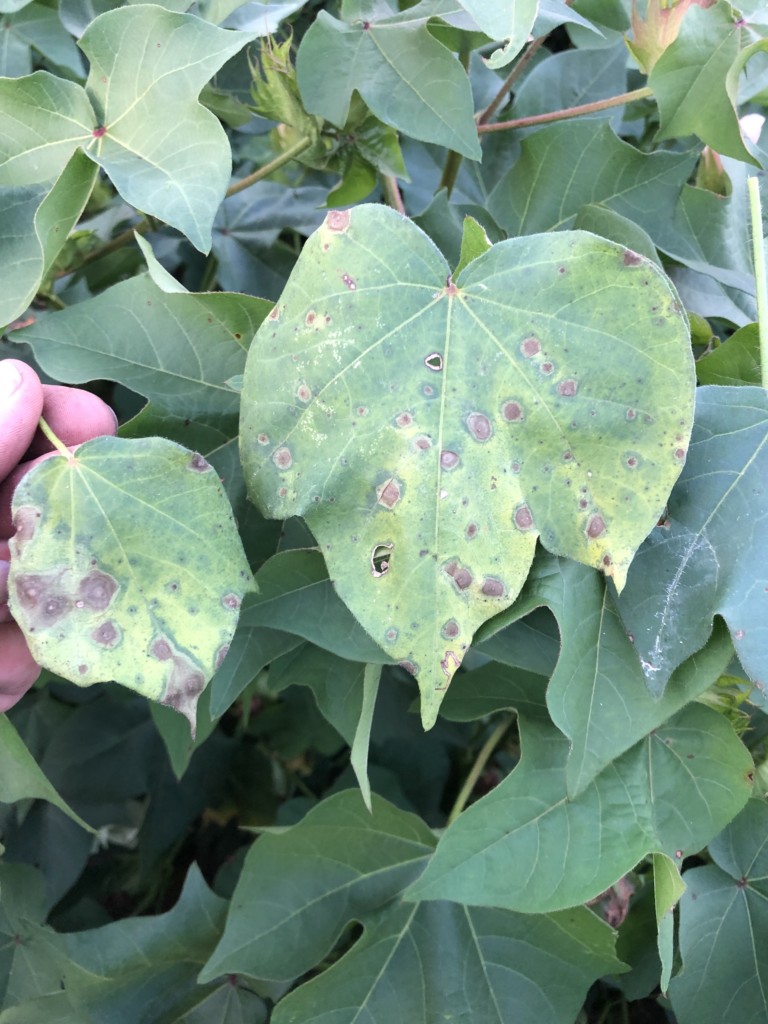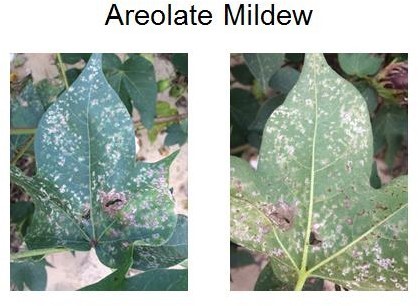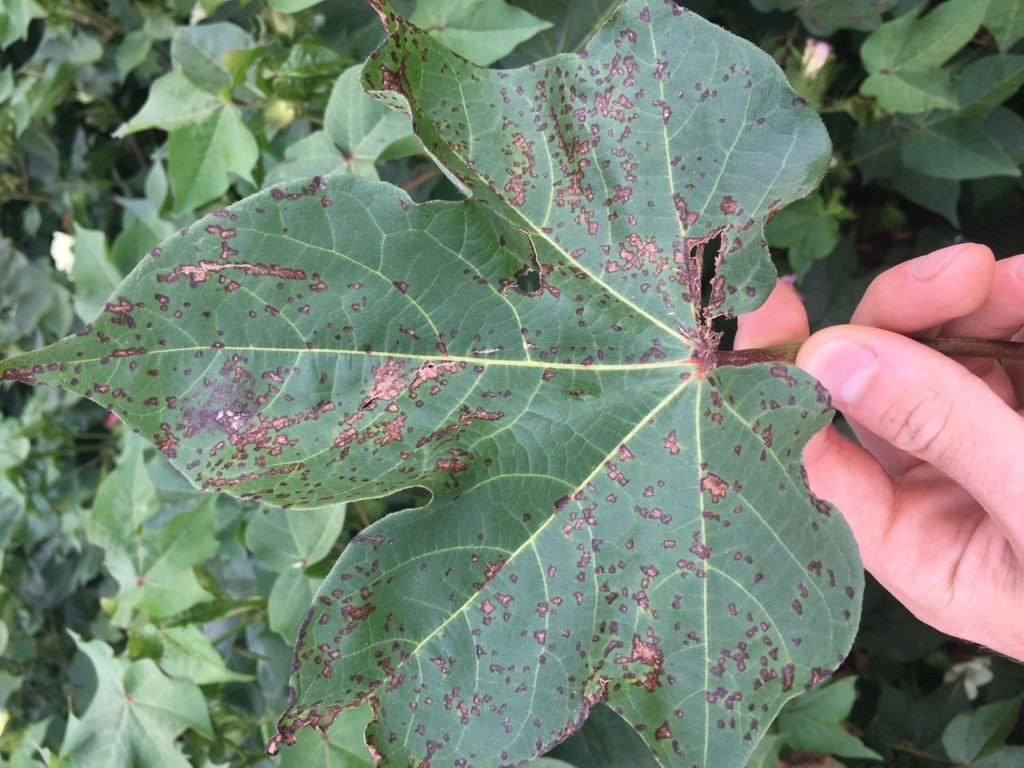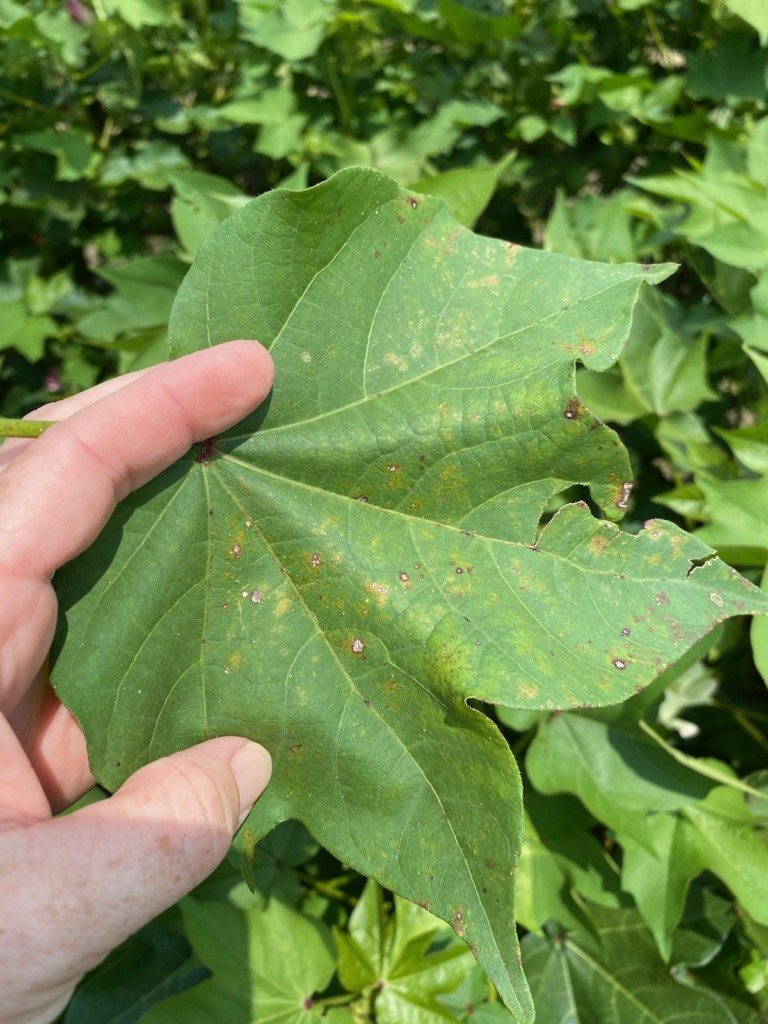This year we are experiencing more wet weather during the cotton growing season than in the past. We cannot do anything about what we are dealt from mother nature but I wanted to make you all aware of the diseases that are now present in cotton across the state of Georgia and relay some information from our UGA specialists on these topics.
Target Spot

Conditions for development and spread of target spot are EXCELLENT in 2021. Growers should consider protecting their cotton crop from target spot between the 1st and 6th weeks of bloom IF the disease is present, or is likely to develop, and conditions are favorable for development and spread, and IF the crop has good yield potential. Judicious use of fungicides can protect as much as 250 lb of lint where target spot is problematic. Where the crop is suffering from drought or poor growth from other causes, protection against target spot with a fungicide may not be warranted. Recent data has shown that Priaxor, Miravis Top and Headline perform well against target spot.

Areolate Mildew
Areolate mildew that occurs within four weeks of when a grower intends to defoliate a cotton crop will likely have minimal effect on yield. Areolate mildew occurring earlier can affect yield and profit. Areolate mildew is easier to control than is target spot, because the disease is more exposed on the upper foliage of the cotton plant than is target spot, which develops deep in the canopy. The same fungicides that protect the cotton crop against target spot also protect against areolate mildew. However, while azoxystrobin is less effective against target spot than are Priaxor or Miravis Top, azoxystrobin has been effective against areolate mildew. Growers are CAUTIONED that azoxystrobin is a single-site mode of action fungicide and that multiple applications of this fungicide alone in a season will hasten development of fungicide resistance.
Bacterial Blight

Bacterial blight has shown up on occasion in the last few years. It starts as tiny water soaked spots that are angular in shape, limited by the leaf vein. The weather is absolutely perfect for spread and there is nothing we can spray to stop it, or even slow it down. The only control is to plant resistant varieties. Bacterial blight of cotton will lead to pre-mature defoliation, and, more importantly, a distinctive boll rot.
Stemphylium Leaf Spot

Stemphylium lesions develop a whitish center that may crack and fall out. You see spots in the upper part of the canopy first. Stemphylium cannot be corrected with a fungicide it is typically a sign of nutrient deficiency. Most leaves also show yellow and red discoloration as well.